
Being able to easily add tables on your content can be very useful. Tables are great for sorting and presenting data to visitors in a way that makes your information easier to understand.
WordPress provides users with a great visual editor, but there are some things that it won’t do by default, such as giving you the option to create tables without having to learn code.
Although you can add tables manually to your content in WordPress if you know HTML (Hyper Text Markup Language) and CSS (Cascading Style Sheets), for many non-technical WordPress users, this is not a realistic option.
Fortunately, you can do just about anything you need done on a WordPress site with plugins, and creating tables is no exception.
In this step-by-step tutorial you will learn how to create and insert tables easily into your pages and blog posts without requiring knowledge of HTML or CSS or coding skills.
Adding Tables To WordPress Posts And Pages
Follow the step-by-step tutorial below to learn how to easily create and add tables into your WordPress content using a FREE plugin called TablePress.
TablePress

A powerful and time-saving WordPress plugin for creating, editing and managing tables in WordPress is TablePress.
TablePress requires no knowledge of HTML, CSS, etc. It lets you easily edit your table data. Tables can contain any kind of data, even formulas.
An additional JavaScript library can be used to add features like sorting, pagination, filtering, and more for visitors. You can include the tables into your posts and pages using shortcodes and even display tables inside text widgets.
You can also import and export a table from/to CSV files (e.g. from Excel), HTML files, and JSON formats.
TablePress was created by Tobias Bäthge and is licensed as Free Software under GNU General Public License 2 (GPL 2).
Using TablePress Plugin For WordPress – Tutorial
To create and add tables to WordPress posts or pages, first install and activate the TablePress plugin.
You can download the plugin here:
https://wordpress.org/plugins/tablepress
Or install it from your own Dashboard …
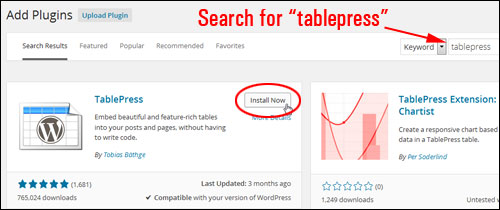
After installing and activating the plugin, a new menu item will get added to your admin menu called TablePress …
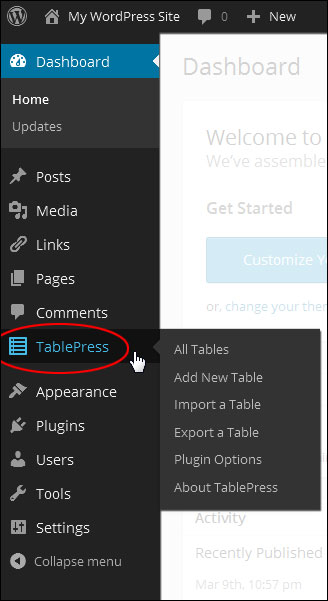
Click on TablePress and select Plugin Options from the submenu list …
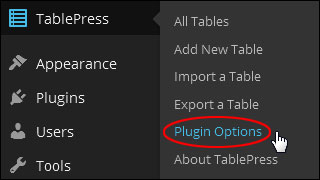
The “Plugin Options” section controls your plugin styling and display settings …
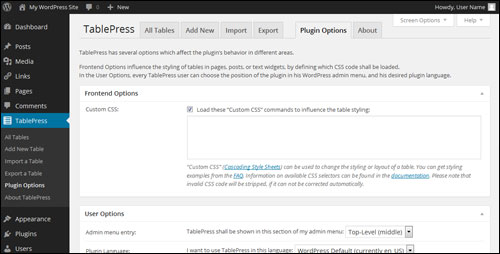
For example, in the “User Options” section, you can modify where the TablePress menu entry appears on your WP admin menu.
By default, the menu entry displays somewhere near the middle of your menu. If you plan to use this plugin a lot, then you can position the menu option closer to the top of your menu by specifying “Top-level (middle)” in the User Options > Admin menu entry dropdown menu …
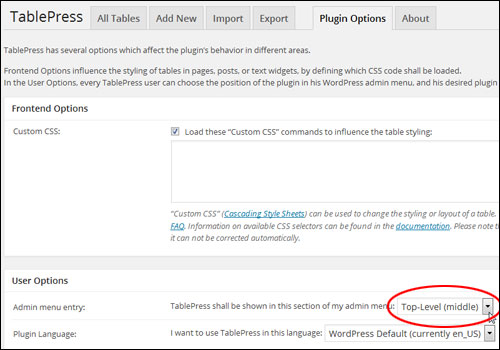
The TablePress menu entry will now appear closer to the top area of the admin menu …
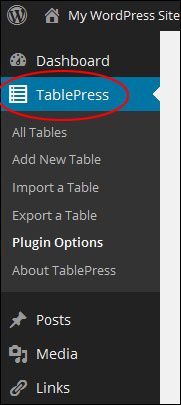
You can also specify other options in the “Plugin Options” tab, such as table formatting styles, default language, etc. Leave all settings as they are if you don’t need to change things in this area.
With TablePress, you create and edit your tables inside the plugin section. Tables are then added via a shortcode into your text. The table will then display after saving and publishing your page.
The great thing about doing this is that you can easily update the information inside your tables without having to touch your pages. The plugin then updates all of your table information in all locations where the table has been added to your content.
To create a new table select TablePress > Add New Table …
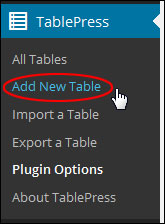
Enter a table name, an optional description, and the number of rows and columns you want for the new table into the “Add New Table” form in the Add New tab, then click on the Add Table button to create your new table. You can edit the name, description and size of any tables you create at anytime…
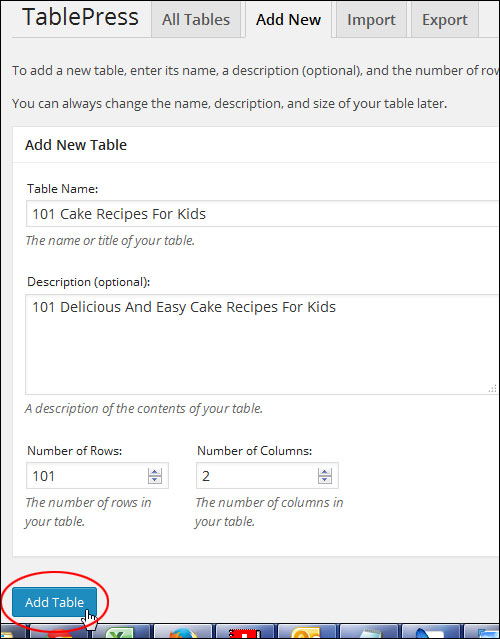
Once your new table is created, it will be listed in the “All Tables” list and get assigned a unique Shortcode ID …
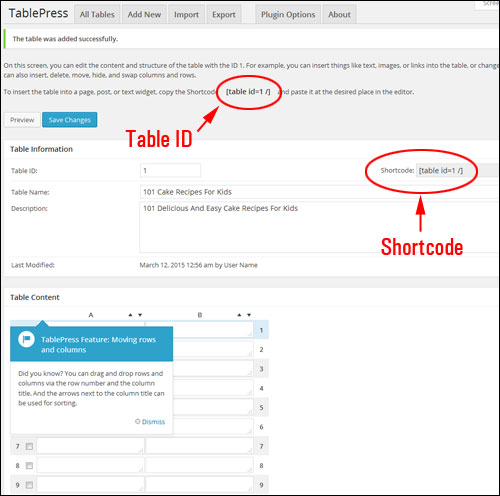
The TablePress shortcode allows you to easily add tables anywhere inside a post or page simply by inserting or copying and pasting the shortcode wherever you want your tables to display …
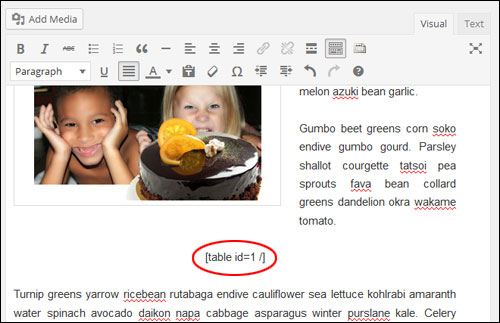
Once you have created a new table, adding content to it is really easy.
In the “Table Content” section, just click in the cell and type or paste your content. You can add text, images and format your content (e.g. add bold text, insert links, etc …)
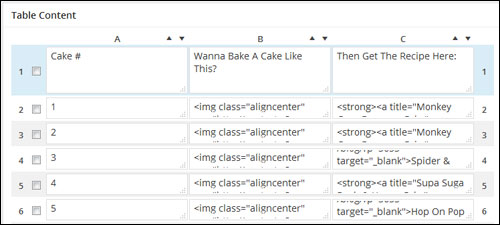
Once your new table is created, displays a number of additional options that will let you configure your table.
For example, in the “Table Options” section you can select the first row of your table to be the table header and the last row of the table to be the table footer, make the background of consecutive rows alternate in color, highlight a row when visitors hover their mouse over the table, show the table name and description above or below the table, and more …
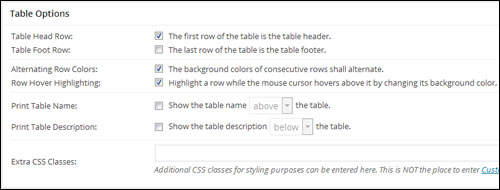
You can also edit your table information after creating it in the “Table Manipulation” area. You can insert images and links, hide, show, insert, delete and duplicate selected columns and rows, add new rows and columns, combine cells, etc …

You can also enable JavaScript library features in your tables that will allow visitors to sort, filter and search your table content, change the number of table rows showing on your content (and let users change the number of rows displayed), display table information, etc …
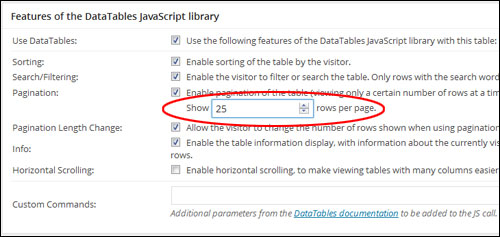
You can see how your table looks anytime, by clicking the Preview button …
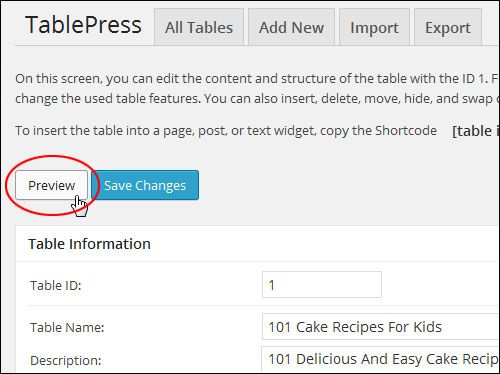
A preview window will open displaying the table. Certain features such as the JavaScript options are disabled in preview mode, but will display when your post or page is published …
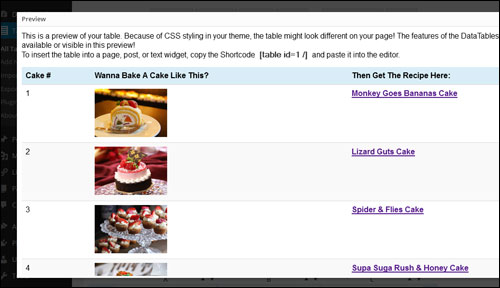
Click the Save Changes button when finished to update your new table data …
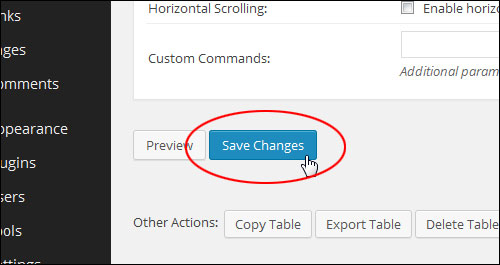
To view a list of all your tables TablePress > All Tables …
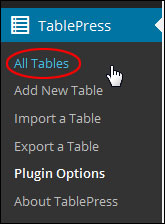
All the tables you have created are listed here. You can edit, see shortcodes, copy, delete, export and preview tables …
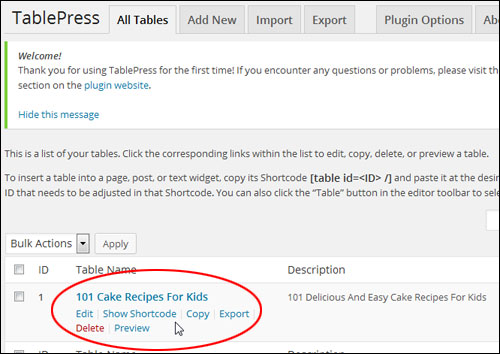
How To Use The Shortcode
You insert a table into any content using the TablePress shortcode.
Click on the Show Shortcode menu item below your table title to get the shortcode …
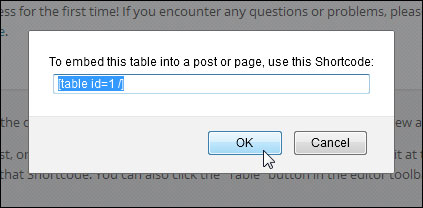
The plugin also adds a menu item to your WordPress content editor. This allows you to easily insert tables into your posts and pages while working on your content.
Place your mouse cursor where you want your table to be embedded then click the TablePress menu icon …
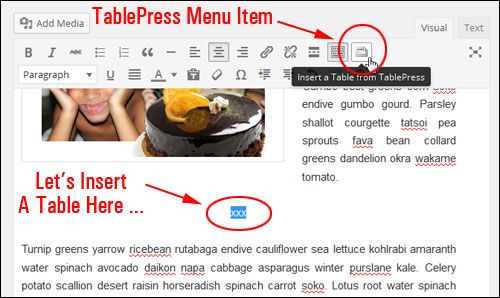
TablePress Menu Icon In WordPress Visual Editor Screen
Note: You can also insert a table when working in the “Text” area of the WP editor …

TablePress Menu Icon In Text Editor Screen
Clicking on the menu icon opens a window containing a list of all your available tables.
Select the table you want to embed in the content and click Insert Shortcode …
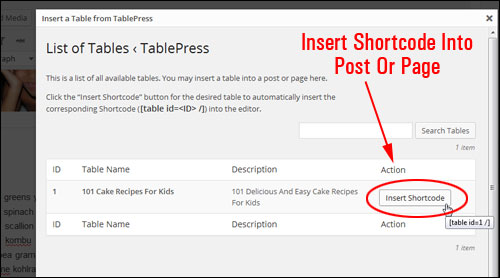
Your TablePress shortcode will be inserted …

Publish the post or page to display the table and table contents …

As stated earlier, one of the great things about this plugin is that you can change things after publishing the table without having to open your post or page. Just tweak the content in the plugin area, then save your new table settings and refresh your content to view the updated content.
Another great time-saving feature of the TablePress plugin, is that if you plan to keep adding data to an existing table, you can simply export your current table, then add new information, make changes, etc. You can then re-import your exported file with the news changes and your table content will be automatically updated throughout your site.
To export an existing table, select TablePress > Export a Table in the admin menu …
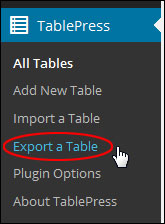
In the “Export Tables” section, choose the table(s) you would like to export (you can select multiple tables by holding down the “Ctrl” key), then select the Export Format you want(e.g. CSV) and any other export options you’d like to make and click on the Export Table button to download the table file to your hard drive …
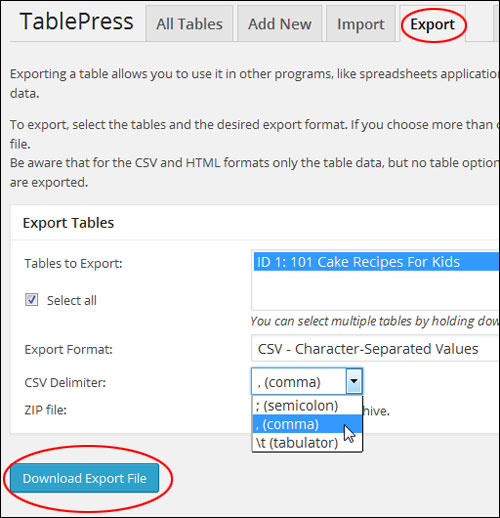
After making changes and resaving the table file, you can then reimport your table into WordPress.
To import a table, select TablePress > Import a Table …
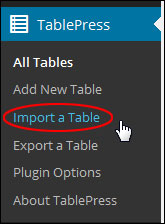
TablePress can import tables from existing data, such as CSV file data, from a spreadsheet application (e.g. Excel), an HTML file resembling a webpage, or its own JSON format.
To import a table, select and enter the source in the “Import Tables” area. You can import multiple tables from ZIP files and choose whether to import tables as a new table or replace an existing table.
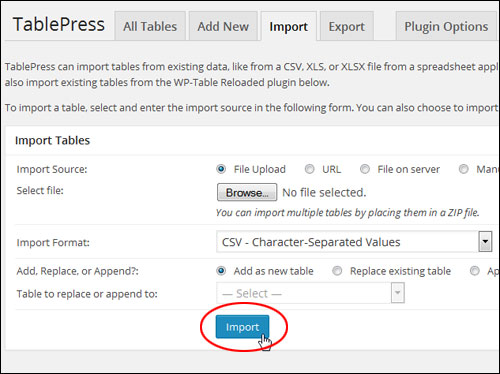
For more information about TablePress, including accessing documentation about extra features, get technical support, contact the plugin developer, etc., click on the “About Tab” in the plugin admin section, or select TablePress > About TablePress …
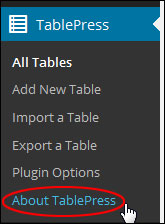
As you can see, TablePress is quite a useful and feature-rich free plugin will help you easily create and embed tables into your site content.
***
"Wow! I never knew there's so much to learn about WordPress! I bought one of the WordPress for Dummies three years ago, such authors need to be on this course!" - Rich Law, Create A Blog Now